In the previous blog I mentioned that there were several types of stories that worked well for the Incredible Hulk. The first I highlighted was the drama, or to be more specific the psychological horror story. This was important because the plots that worked best for the characters played to their strengths, and exploited a weaknesses for the hero to overcome. The television series was a prime example of this. It was carried by Bill Bixby as Dr. Banner. He was trying to cure himself of the Hulk, but had to cobble together lab equipment from scraps, and while being hunted by the authorities. He often found himself entangled in the affairs of complete strangers. Whether it was helping someone overcome an addiction, chase off a gang, or rescue a kidnapping victim. He had to use his intelligence to find an answer. The Hulk would only show up in maybe two or three minutes out of each episode when life, and death was at stake. It highlighted to audiences that Banner was a sympathetic figure, and the Hulk was a terrifying creature that was part of the same person. There was nothing that could stop him if he was unleashed, and Banner did everything he could to keep that from happening. The Hulk as a character could also be considered a contemporary retelling of Dr. Frankenstein, with the Hulk being the monster that he unleashed to the world. Banner was also thought of as the modern Prometheus, the Ancient Greek character that stole fire from the gods, and gave it to man. He was eternally punished for his arrogance.
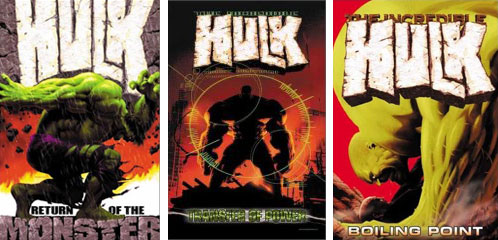
Banner unleashed the power of gamma radiation, and would also be cursed for his actions. The Hulk could be presented as a misunderstood monster, reluctant hero, or even wandering adventurer. This is where I would like to start talking about my favorite Hulk artists. Because in order to tell the story of the man, and the monster then you need to be able to visually make the distinction. In superhero comics it’s very easy to see when hero is present, and when the secret identity shows up. Superman could put on glasses, and a business suit to become Clark Kent. Bruce Wayne could put on a mask, and cowl to become Batman. Bruce Banner turned into a half ton, nearly eight-foot-tall green man. Each artist brought their own visual style, their own aesthetic to the character. In my opinion the type of artist featured on the Hulk books could make, or break the story. Horror was one of the best formats for a Hulk story. Whether it was the Hulk fighting monsters, demons, or aliens. An artist that was great at rendering body, or biological horror could help ground readers into the world that the Hulk was entering. The artist that I think laid the foundation for this type of Hulk story was Bernie Wrightson.
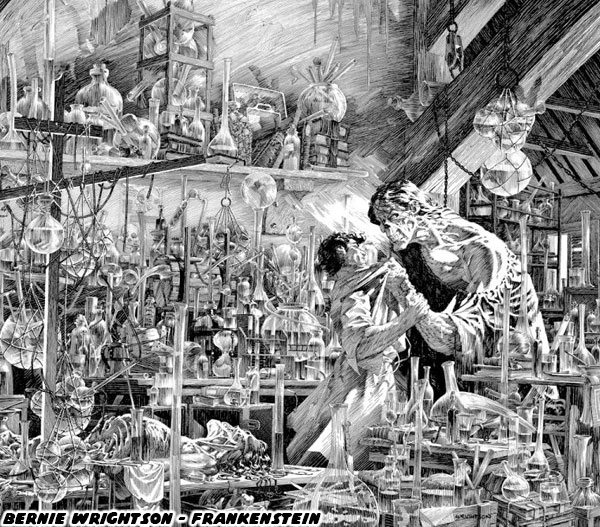
Mr. Wrightson (RIP) was an exceptional draftsman. His lines, and detail were unrivaled. He was known for visceral renderings in his character art. We could see veins, muscles, scars, and various features on the people he drew. His black, and white art featured in the Frankenstein book released by Marvel in 1983 set a bar impossible to top. His style was perfectly suited for horror illustration, rather than mainstream comic book heroes. Unfortunately for Bernie the Comics Code Authority passed a sweeping set of laws in 1954 meant to self-regulate gratuitous horror, and violence from the comics industry. Bernie was able to skirt the code by never rending anything too graphic, but rather just hint at it. He was perfect for the horror characters like Swamp Thing (which he co-created), and the Marvel equivalent known as Man Thing. Bernie was one of the rare artists that could do it all. Many people do not know that the lead artist on a comic often only did the initial pencil work. The inking, and coloring of individual pages were often assigned to someone else. Bernie found work inking for other artists, as well as coloring for them at both Marvel, and DC. It only made sense that someone adept at drawing horror comics would be a good fit rendering the Hulk.
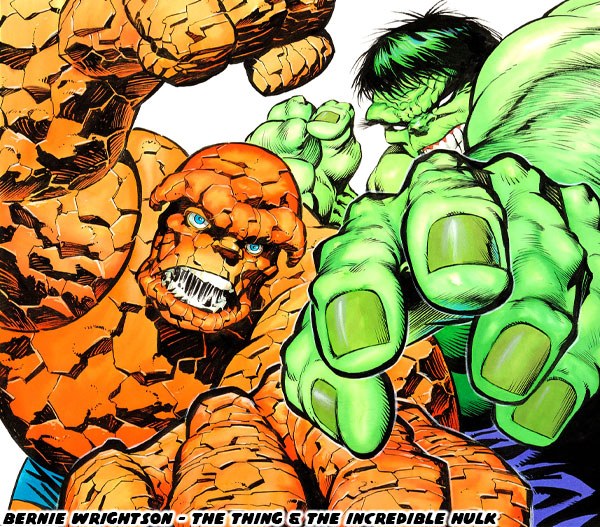
At the core the Hulk was a monster. The artists that did the character justice had to know how to draw creatures, rather than traditional superheroes. This was something that not every comic book artist was capable of doing. The mistake they made was in trying to draw the Hulk like a gigantic bodybuilder. The television series may have presented the idea to the mainstream, however the Hulk in the comics was anything but human. First off the Hulk on television was vastly underpowered compared to his comic counterpart. On TV he could get injured by bullets, and a fall from a great height could kill him. Whereas in the comics he could survive atomic blasts, and didn’t burn up on reentry from his leaps into space. Still there were artists that gave the Hulk a distinct bodybuilder physique. Bart Sears was one of my favorite comic book artists of all time. His understanding of anatomy was unmatched among his contemporaries. He often took proportions from professional male, and female bodybuilders when creating the physiques of his characters. They looked stunning when he penciled, and inked them. Something similar could be argued for Bryan Hitch. The lead artist on the “Ultimates” run which was designed to make the Marvel characters look, and feel real. These artists were great at the traditional hero books, however their version of the Hulk was far from my favorite.
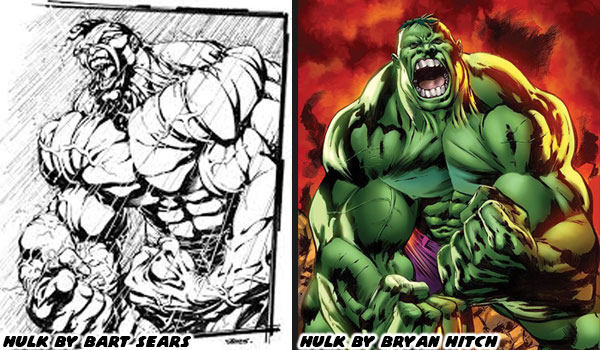
The idea that in order to convey strength, and power in a comic book then a character had to be presented as “jacked” or have overdeveloped muscles. This was a trap that a lot of artists fell into when presenting classic characters. Someone like the Flash for example was known for his speed. Therefor it made sense that he was built like an Olympic runner, long, and lean muscles. Someone like Spider-Man had the physique of a gymnast, strong, and flexible. Each character still looked heroic, but had muscles proportional to their abilities. Yet in order to convince audiences that a character like Superman, or Omni-Man was the strongest character in their respective books they had to have bodybuilder physiques. No artists made their caped heroes (or villains) as jacked-up as Ed McGuinness, and Ryan Ottley. It was kind of hard to make people think that Clark Kent was a humble journalist when he had a neck as big as an NFL linebacker. Or that Nolan Grayson had developed his physique from writing books.
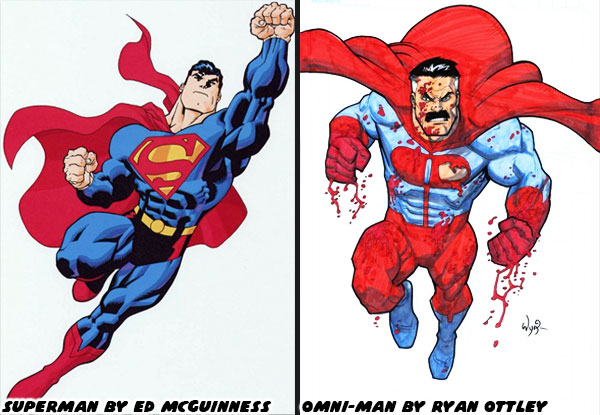
It turned out that there was a reason that each artist illustrated their heroes so strong, but I’ll talk about that in a future blog. The greatest, and longest-lasting Hulk artists had a few things in common. Their ability to create a figure that was more than a large green bodybuilder should be studied by all comic artists, and illustrators. There were many subtleties that helped explain the character, and the comic book aesthetic that was unique when compared to manga, animation, or other forms of art. We will look at this in the next blog. Were there any Hulk artists that you enjoyed? Were you familiar with the work of Bernie Wrightson? I’d like to read about it in the comments section. As always if you would like to sponsor me
please visit my Patreon page and consider donating each month, even as little as $1 would help make better blogs and even podcasts!










No comments:
Post a Comment